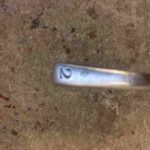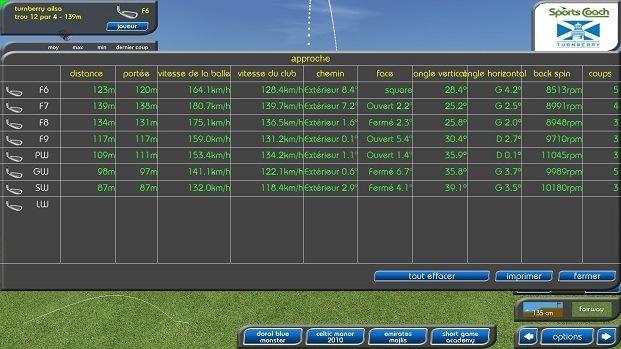For many golfers, the tee box on a par four or five means one thing and one thing only, time to let the big dog out of the bag! There is no ‘choosing the right club’ it is driver and nothing else! As someone who has had an up and down relationship with my driver over the years, I think that most of us should be a little slower to pull the head cover off the big stick and think about another option: teeing off with irons.
- Teeing off with irons isn’t just for short holes
- Irons can provide control and lower scores
- Fairway woods and Hybrids aren’t the only other tee options
- Hit to a distance not just to maximum distance
Why Should you be Teeing off with Irons?
I am certainly not saying that we should all avoid the driver. I spent a few years without a driver in the bag but it wasn’t for any positive reasons: I simply couldn’t control the damn thing! In this situation, you need to find alternatives, whether it is a fairway wood, hybrid, driving iron or just a long/mid iron.
Nowadays, I am on much better terms with my driver. I have something in the bag that fits me fairly well in terms of specs and I also have a much better idea of swing mechanics and what I need to do in order to get the ball going where I need it. I don’t really fear that drive that disappears off the planet or the two-way miss which used to bring me out in cold sweats.
Given that I now control the driver reasonably and also have the benefits of my long levers to generate speed and therefore distance, you would think that I would be keen to play driver as often as possible. Well, yes and no. I do certainly play my driver more than before (which isn’t difficult given it used to stay at home!) but it isn’t my only choice.
The key for me is thinking about my options and this is why I believe teeing off with irons should be higher up the list of choices for some golfers.
Hitting to a Distance
The thing that many golfers forget on the tee box is that it isn’t always about hitting maximum distance and in fact, you might want to avoid maximum distance depending on the hole and your game. As an example, I prefer to hit full irons shots. I generally do better hitting the ball hard rather than trying to work something. For me, I would rather have a full nine iron or wedge into a hole than trying to take a little bit off something or control a wedge.
So if I hole is 330 yards and I hit my driver 250, I might not actually want to hit it. I would probably feel happier hitting something 200 and leaving myself with a nice full wedge or whatever. It might not be perfect, but I feel like it is unlikely to be horrible whereas that 80 yard half wedge could be great or….perhaps not so great!
This i part of a smart golf strategy. It makes sense to work your way back from the green to the tee box. Think where you want to be playing into the green and then choose the club that has the best possible chance of getting you there or thereabouts.
This also depends on the hole. Maybe it is a long par four and you feel like the extra distance from a driver will be important. That is certainly something to consider, but what is the actual layout of the hole? If driver takes you to the narrowest part of the fairway and there is trouble either side, why take the risk? Maybe there is water around you driver distance, or fairway bunkers? Perhaps a perfect driver will leave you just short of the water on that thin strip of fairway between deep bunkers with a wedge in your hand.
If that happens, you are in great shape to think about hitting the green and having a shot at birdie. But how often is that the case? Golf is a game of stats and as I mentioned here, you need to be analysing your game if you want to improve. Perhaps you play this hole twenty times over a season. You remember those two perfect drives that lead to birdie. What about the 5 where you managed to scramble to save par from bunker or rough? Now the five more where you were happy to make bogey from the trees? and the other couple where you had to chip out and made double? Perhaps the average of these twenty rounds wasn’t nearly as good as it could have been with a different approach.
Fairway woods, hybrids and long Irons
Of course, the obvious question is why not hit a fairway wood or hybrid? No reason at all for many, but once again, it depends on the golfer. I actually feel like fairway woods, at least lower-lofted ones, aren’t that great an option for most golfers. A three wood for example is a hard club to hit. It has a shaft length which really isn’t much shorter than a driver and yet the head size is much smaller. For many golfers, it probably isn’t a club that should be anywhere near there bag.
Of course, if you hit fairway woods well, you could do be looking at a five or seven wood to do a similar job. Once again though, it doesn’t work exactly like an iron. For example, maybe you hit a seven wood and a four iron about the same distance. It is more than likely that they have very different ball flights. That seven wood is probably going to go a lot higher. If it is a bit windy, control become a problem.
In the Summer an iron can be much more effective too. Personally, I prefer to see a ball heading lower off the tee and rolling down a dry fairway. It feels like a safer option to me although your mileage may vary.
This brings us to the hybrid. I think the hybrid is a great golf club and probably more golfers should carry at least a couple. I have one that I currently have in the bag (a Mizuno jpx fli hi 3) and have, at times, had 4 in the bag! However, ever since I started playing I have had people say to me that I am an ‘iron player’ and it is definitely true that I feel comfortable with an iron in my hands.
As forgiving as a hybrid is, I just don’t feel the same control as with an iron and when I am on the tee, I want to feel like the ball is going where I need it, especially on a tighter hole.
Driving Iron or long Iron?
So if we are looking at an iron off the tee, you might think that I am talking just about driving irons, which have become very popular over the last few years. These are with a doubt fantastic clubs, but don’t rule out simply hitting the longest iron from your set that you are comfortable with. For example, I like hitting my five iron. I feel like it is unlikely that I will hit a complete horror shot. A bad result might lose me a few yards or find the edge of the rough but almost certainly nothing horrible. My next shot on an average par four is almost certainly going to be an iron into the green.
And here is the key. I am an iron player. I feel like if I have the 330 yard par four mentioned earlier, I am not going to be far off the green (and hopefully on it) if I hit something like five iron, eight iron. I am a single figure golfer, but a high single figure. If I am leaving myself, at worst, a chip around the green, I am making, at worst, bogey and over time I am probably averaging nearer to four than to five. I am playing, again at worst, to my handicap.
You might think of this as being boring or safe golf. Perhaps that is the case, but I would say a couple of things. Firstly, there is a time to get the driver out and smash it. Sometimes there is a nice, wide fairway to aim for. Sometimes, it is no easier to hit the fairway at 200 yards than 250 so why not take it on? Sometimes the driver is just working really well and you feel confident.
Secondly, this is what intelligent golf is all about. If you want to score better, you need to think your way around the course. Pick the club that gets you where you want to be on the fairway. If that means teeing off with a six iron, that is the smart play and your scorecard will be all the better for it.



